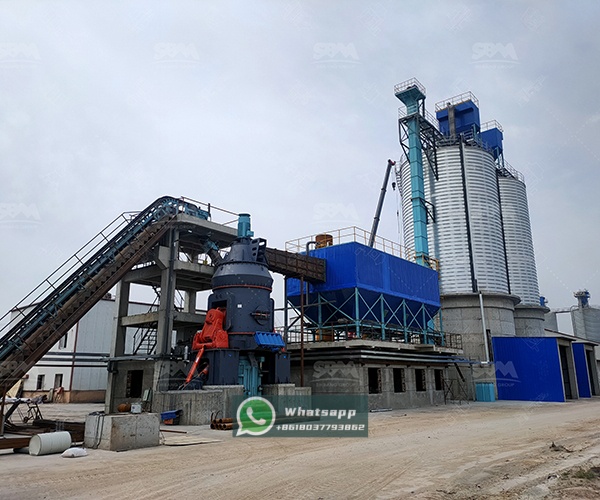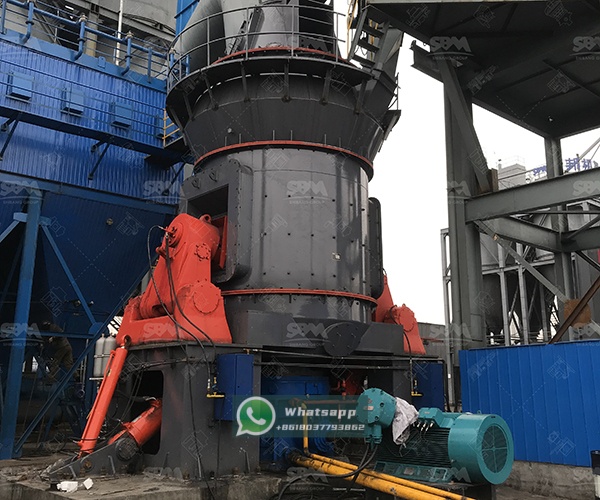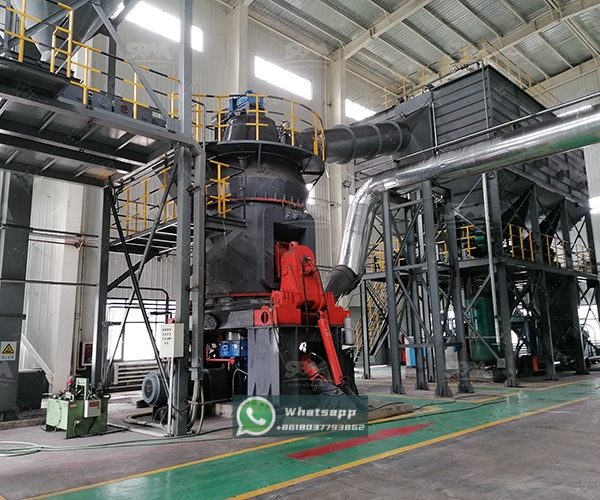In the contemporary mining industry, sustainable practices and operational efficiency are no longer optional but essential components of successful operations. Two areas where these principles converge significantly are mining backfill and soil stabilization. Both processes rely heavily on the use of finely ground materials, with granulated blast furnace slag (GBFS) emerging as a premier choice due to its pozzolanic properties, cost-effectiveness, and environmental benefits. The efficiency of converting raw slag into a reactive powder, however, is entirely dependent on the grinding technology employed. This article explores the pivotal role of vertical roller mills in this specialized sector, with a focus on the technological advancements offered by industry leaders like Shanghai Zenith Machinery Co., Ltd.

Granulated Blast Furnace Slag, a by-product of the steel industry, is an excellent cementitious material when finely ground. In mining backfill, it is used to create a paste or slurry that is pumped into underground voids left by ore extraction. This backfill provides ground support, enabling safer mining practices and reducing surface waste disposal. For soil stabilization, ground slag mixed with activators like lime or cement improves the engineering properties of weak soils, enhancing their bearing capacity and durability for construction projects. The key to unlocking these benefits lies in achieving a very fine, consistent particle size distribution, which maximizes the material’s surface area and reactivity.
While several grinding solutions exist, vertical roller mills (VRMs) have proven to be exceptionally well-suited for slag grinding applications. Their design philosophy integrates multiple processes—crushing, grinding, drying, classification, and conveyance—into a single, compact unit. This integrated approach offers distinct advantages over traditional ball mills for this specific duty.
Shanghai Zenith Machinery Co., Ltd., an excellent manufacturer of ore grinding equipment in China, has made great achievements in the field of ultra-fine powder grinding. Their extensive research and development have yielded a range of vertical mills that are perfectly engineered for the demanding requirements of slag processing. For the specific application of slag grinding in backfill and soil stabilization, two of their products stand out: the robust LM Vertical Grinding Mill and the high-precision LUM Ultrafine Vertical Mill.
The LM Vertical Grinding Mill is a cornerstone of Zenith’s product line, designed for reliability and high output. It is particularly effective for producing the fine powders required in bulk applications like mine backfill. Its ability to handle large feed sizes and its high capacity make it ideal for central grinding plants serving large mining operations.
The following table details the technical parameters of the Vertical Slag Mill series, which is specifically configured for this tough abrasive duty:
| Model | Capacity (t/h) | Main Motor (kW) |
|---|---|---|
| LM130N | 4-6 | 200-250 |
| LM220N | 20-26 | 900-1000 |
| LM370N | 90-110 | 3150-3300 |
For instance, the LM220N model offers a capacity of 20-26 t/h, making it a perfect match for mid-to-large-scale mining operations requiring a consistent and large supply of ground slag for their daily backfilling activities.

When the application demands even finer product or higher reactivity—such as in advanced soil stabilization projects where greater strength development is critical—the LUM Ultrafine Vertical Mill is the superior choice. This mill represents the cutting edge of grinding technology, integrating ultra-fine grinding, classification, and transportation with intelligent control systems. It produces products with a high content of end-fines, which directly translates to faster setting times and higher ultimate strength in the final stabilized soil or backfill material.
| Model | Main Machine Power (kW) | Capacity (t/h) | Size Distribution D97 (μm) |
|---|---|---|---|
| LUM1525 | 220-250 | 1.6-11.5 | 5-30 |
| LUM1632 | 280-315 | 2.0-13.5 | 5-30 |
| LUM1836 | 355-400 | 2.3-15 | 5-30 |
The ability of the LUM series to achieve a D97 of 5-30 microns (approximately 600-2500 mesh) provides engineers with a material that offers exceptional performance, enabling the use of less binder and creating stronger, more durable end-products.
Implementing a Zenith vertical mill for slag grinding translates into direct operational and economic benefits for mining and construction companies. The significant reduction in specific energy consumption (kWh/t) lowers operational costs. The mills’ durability and low wear rates, thanks to high-quality grinding rollers and table segments, reduce maintenance downtime and spare parts costs. Furthermore, by converting an industrial by-product (slag) into a valuable commodity, companies can create a new revenue stream while simultaneously reducing their environmental footprint through lower carbon emissions compared to using ordinary Portland cement alone.

The selection of grinding technology is a decisive factor in the efficiency and success of slag utilization in mining backfill and soil stabilization. Vertical roller mills, with their integrated design, energy efficiency, and precise control, represent the modern standard for this application. Shanghai Zenith Machinery Co., Ltd., with its deep expertise and innovative product portfolio, provides tailored solutions like the LM Vertical Slag Mill for high-capacity production and the LUM Ultrafine Vertical Mill for high-performance applications. By partnering with a technology leader like Zenith, companies in the mining and construction sectors can optimize their processes, reduce costs, and contribute to more sustainable and safer industrial practices.